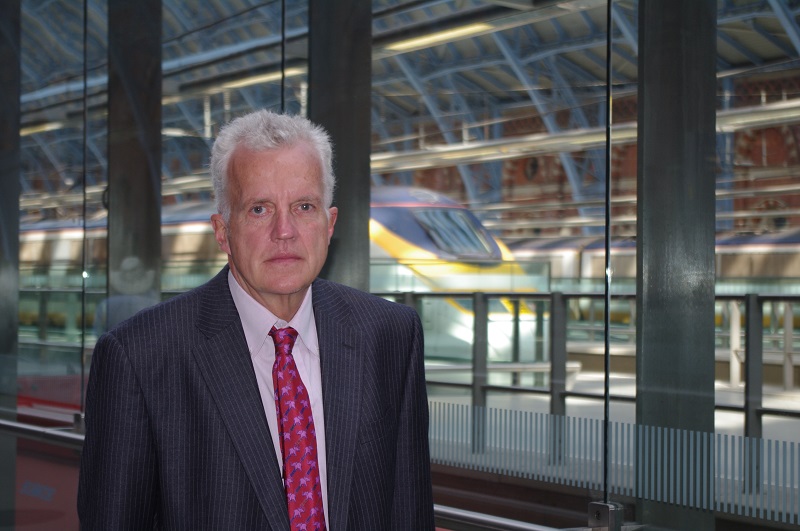There is a very long and expensive road scheme that has escaped the cuts. And, indeed, any virtually any attention which is surprising given that at 50 miles long and costing £800m, it is one of the most expensive highway projects in Europe. It goes through a beautiful unspoilt area of countryside and yet so far no Swampy-type figure has been rushing to set up a camp in the beautiful countryside that it will despoil. In fact, the scheme is little known outside the area affected and despite the cost is being pushed ahead without delay.
The reason for the lack of interest is that the road is in Northern Ireland which attracts little coverage in the mainland except when some mad bomber decides to play with Semtex. And the explanation for the fact that the money is still available is that, remarkably, the scheme is being part funded with 450m Euros by the Irish government. Yes, the very same Republic of Ireland government which, as I write, is struggling to piece together a bail-out which, inter alia, involves reducing the minimum wage and putting all sorts other very worthy projects on hold, and raising taxes through the roof.
The road in question will speed travellers between Dublin and Donegal, which of course are both in the Republic, through County Tyrone which is in Northern Ireland. The plan is for a high speed dual carriageway – 70mph rather than 60mph- that will replace the existing A5 which is considered inadequate, despite recent improvements to several sections.
As the new road cuts through unspoilt rich agricultural land, which is by far Tyrone’s main industry, and would spoil the rather remote atmosphere which is attracting a growing number of tourists, there is predictably a big campaign mounting against the plan. This is unusual for Northern Ireland where normal politics were in suspension for more than a generation during the troubles with most decisions being made by government departments based in Stormont, but often merely siphoning through policies developed in Whitehall.
However, the protesters have got the bit between their teeth, and a meeting at which I spoke in late November attracted more than a hundred people on a bitterly cold night. There is no shortage of reasons for objection. The scheme is going to a public inquiry, but the protesters face an unequal task. The Northern Ireland Roads Service will have the full panoply of lawyers at the hearings while the protesters will have to scrimp and save to be represented.
Nevertheless, they are likely to put up a good show. On the face of it, with demand at just 12,000 cars per day and, from my observation of a several hours spent on the road, no sign of overcrowding, there cannot be any justification for such a massively expensive scheme with such damaging environmental consequences to reduce the journey time between Dublin and Donegal by just 20 minutes. Indeed, the killer point is that according to a consultant employed by the protesters, the scheme has a benefit cost ratio of just 1.7, far lower than would be the benchmark for a similar project on the mainland where 2 is an absolute minimum and 2.5 a more likely target. Moreover, there is compelling evidence that good road connection suck development out of an area as much as being the catalyst for it. As the protesters point out, the Celtic Tiger roared while there was a grossly inadequate transport network, and now that the Republic has a gleaming set of new roads, it is in a state of collapse.
There is, too, the possibilty of an alternative, as there is an old rail alignment. The line was closed 40 years ago, but would provide a far more attractive alternative to the burgeoning tourist trade, but the idea does not even appear to have been assessed by the Stormont government.
The explanation for drive to push the project through in the face of such obvious shortcomings is that bigger politics are involved here. The road was part of the St Andrews final peace agreement for Northern Ireland and that is why the Republic is putting up the money for a road not on their territory (which, incidentally, may be open to legal challenge since it is questionable whether the Northern Ireland Roads Service can vest land for the main purpose of allowing Republic traffic to speed through with no benefit to its own population).
The outcome of the A5 road inquiry is not only crucial for transport in the province, but also a wider test of politics of Northern Ireland. On the mainland, the Department of Transport would not put up a plan to build such an environmentally insensitive road through greenfield land because of the opposition. Indeed, virtually all road schemes in Britain are now widening of existing routes or alterations to existing alignments. It has long been recognised that it is impossible to grow the road network to met increasing demand, what Professor Phil Goodwin termed some years ago as the New Realism.
So here’s a word of advice to both the British and Irish governments. If you want to save a rather large chunk of money – unfortunately £32m will have been spent already by the time of the inquiry – revisit the plan for the road which looks like foisting a discredited transport policy on the unfortunate Irish.
